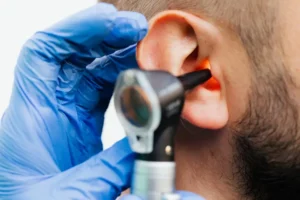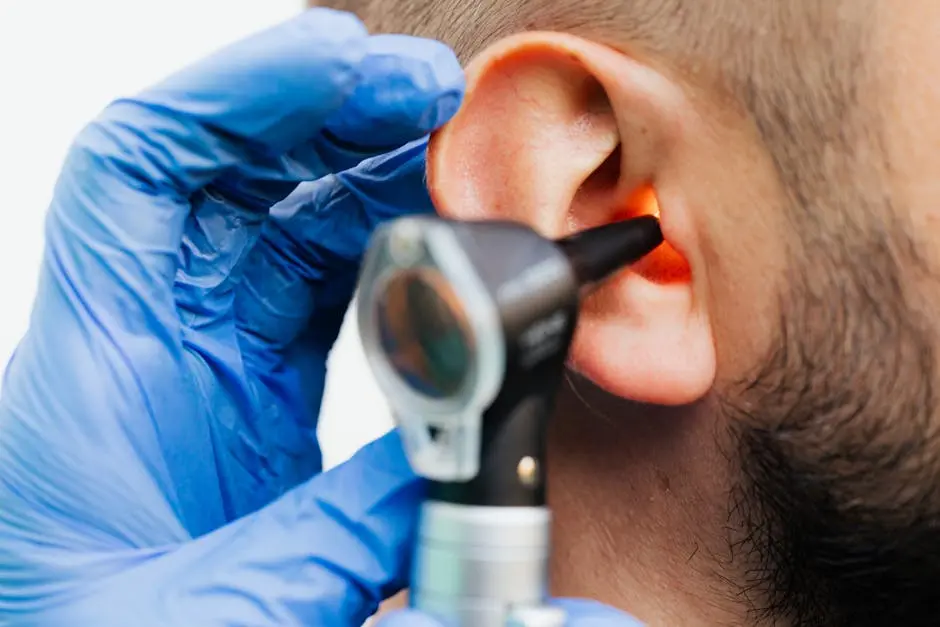Ear wax, or cerumen, is a natural substance produced by our bodies to protect the ears. However, excessive buildup can cause discomfort and hearing issues. In this blog, we’ll explore the DIY methods to safely and effectively remove ear wax at home, ensuring healthy ears and clear hearing.
Understanding Ear Wax and Its Functions
Before diving into removal techniques, it’s important to understand what ear wax is and its essential role in ear health. Ear wax protects against dust, microorganisms, and other foreign particles. While many view ear wax as a nuisance, it’s actually a natural defense mechanism. This waxy oil plays a crucial role in maintaining ear health by capturing and preventing debris and bacteria from reaching the deeper parts of your ear, where they could cause serious infections. Plus, ear wax has moisturizing properties that prevent the delicate skin of the ear canal from becoming dry and itching.
Ear wax is composed of a mix of long-chain fatty acids, squalene, and alcohols that give it its wax-like texture. According to Healthline, earwax also boasts antibacterial properties, which help lower the risk of infections in the ear canal. This is why routine ear cleaning isn’t necessary for everyone. Most of the time, the ears manage to clean themselves organically as excess wax naturally migrates outwardly. However, understanding when the buildup becomes excessive is crucial so that it can be addressed effectively.
Signs You Need to Remove Ear Wax
Not all ear wax needs to be removed, but certain signs indicate it’s time to take action. Symptoms such as muffled hearing, dizziness, or earache can signal excess wax buildup. Occasionally, individuals may experience a sensation of fullness within the ear or a persistent itch, suggesting that the natural migration of wax isn’t happening efficiently. In more severe cases, the presence of persistent tinnitus or a sudden decrease in hearing ability should be addressed, as this might suggest a blockage.
Acknowledging these signals is key to preventing more significant issues, such as persistent tinnitus or hearing loss. The advice here is clear: if symptoms persist and impact daily life, a visit to a professional might be necessary. At Wichita Falls Hearing, they offer services to evaluate if ear wax is obstructing your auditory experience.
Safe DIY Methods for Ear Wax Removal
There are several effective DIY methods to consider: using warm water irrigation, ear drops, or a bulb syringe. We’ll guide you through each step, making it simple and safe to do at home. Starting with the simplest, warm water irrigation involves gently flushing out the wax using a syringe filled with warm water. You tilt the head and gently squirt the water into your ear canal, allowing gravity and the water to do the work. For those preferring ear drops, solutions incorporating hydrogen peroxide can soften the wax, making it easier to remove afterwards. Ensure you follow the product’s guidelines for safe use.
Oils like mineral or olive oil are highly recommended alternatives, as they help in softening the wax naturally. Based on insights from Healthline, these oils can be gently warmed and applied using a dropper, aiding in the eventual removal of wax. Perform these techniques with caution and patience, allowing the treatments to soften the wax before any flushing or irrigation attempts. Each method carries minimal risk when executed correctly, enhancing your at-home ear care experience.
Methods to Avoid: Risks of Improper Ear Wax Removal
While DIY treatments can be effective, there are certain methods that can be harmful, such as using cotton swabs or ear candles. Learn why these should be avoided to prevent ear damage. The use of cotton swabs, for instance, may seem practical but is discouraged as it tends to push wax deeper into the ear canal, increasing the risk of compacting the wax or causing abrasions to the ear walls.
Similarly, ear candling, which involves inserting a lit, hollow candle into the ear with the hope that it will create suction to remove wax, is not only ineffective but perilous according to experts. It poses risks of burns and ear damage. Emphasizing caution, the Healthline article highlights the importance of steering clear of these methods, as improper removal could necessitate medical intervention due to injury or worsened blockages.
When to See a Professional for Ear Wax Removal
In some cases, professional intervention is necessary. Knowing when to seek help can prevent further complications. Persistent symptoms or discomfort should be evaluated by a healthcare provider. If experiencing prolonged impairment in hearing, it is advisable to explore professional options such as what’s offered at Wichita Falls Hearing, where complimentary hearing tests can assess whether ear wax is the culprit or if another condition needs addressing.
Ultimately, while DIY methods afford convenience and savings, they come with the responsibility of understanding their limitations and risks. For anyone suspecting severe impaction or a situation unresponsive to over-the-counter remedies, consulting with professionals remains the safest and most effective course of action. Supporting ear health is an ongoing process, and professional guidance can make a significant difference in maintaining your auditory wellbeing.
Stay Safe with DIY Ear Wax Removal
Ear wax removal at home is a task that requires careful attention to safety. By following the methods and precautions outlined in this blog, you can effectively manage ear wax buildup without risking your ear health. Remember, if you’re ever in doubt, it’s best to consult a healthcare professional.


